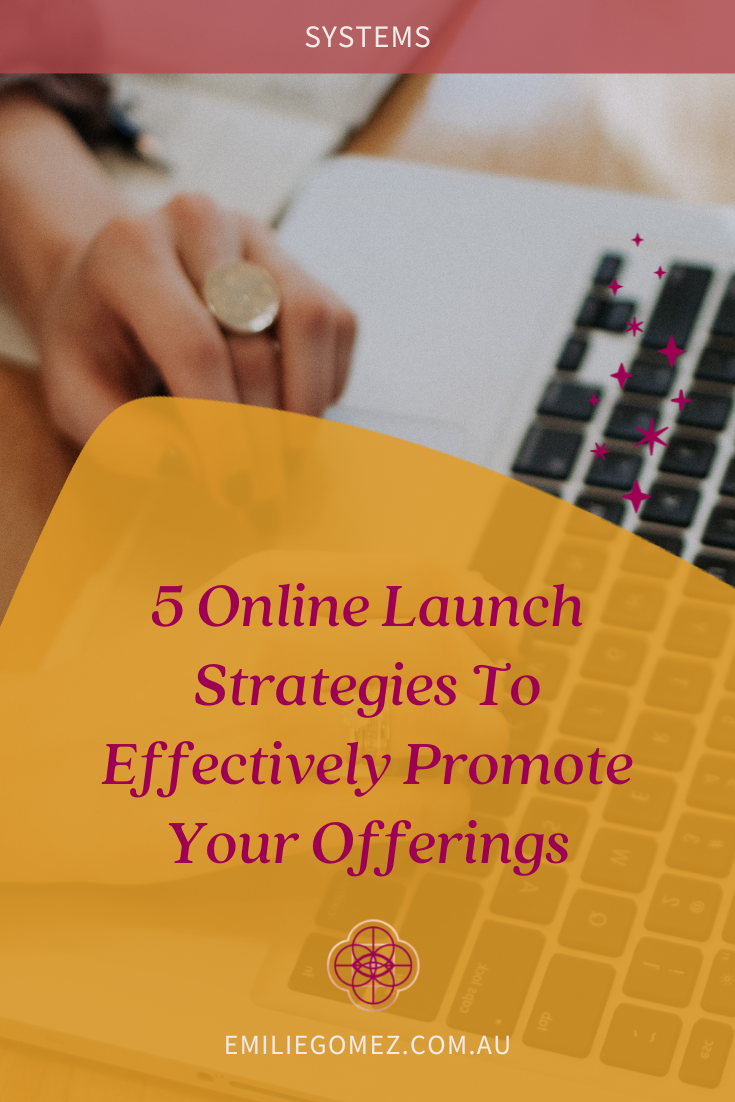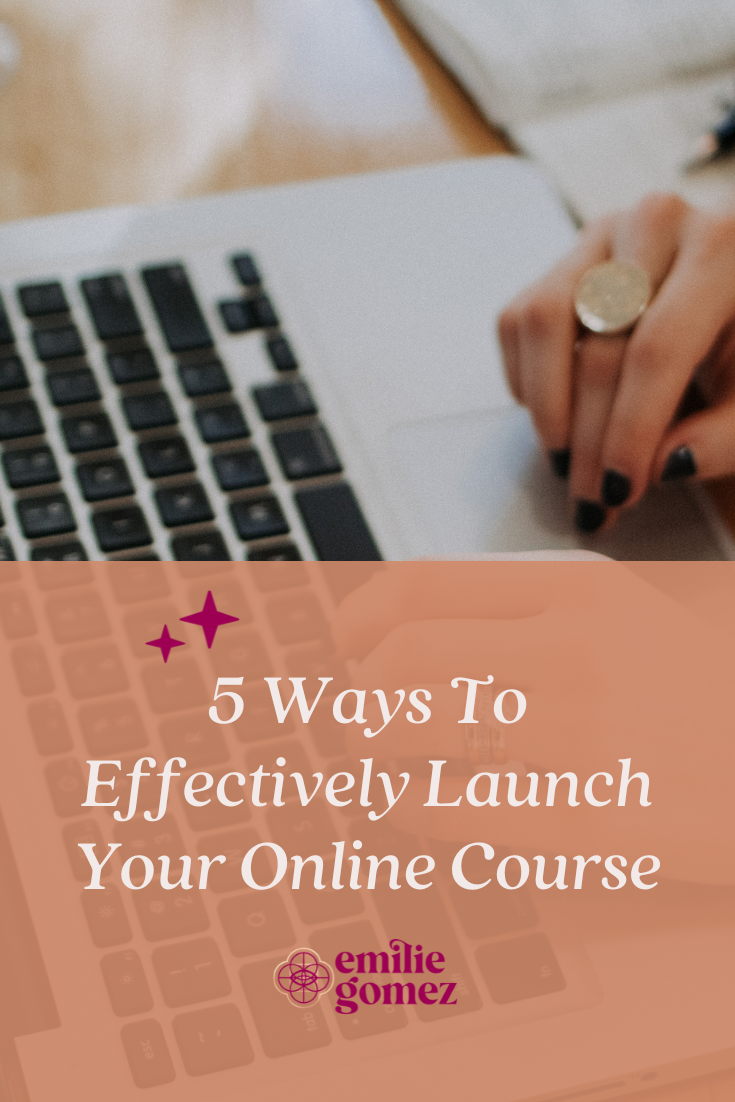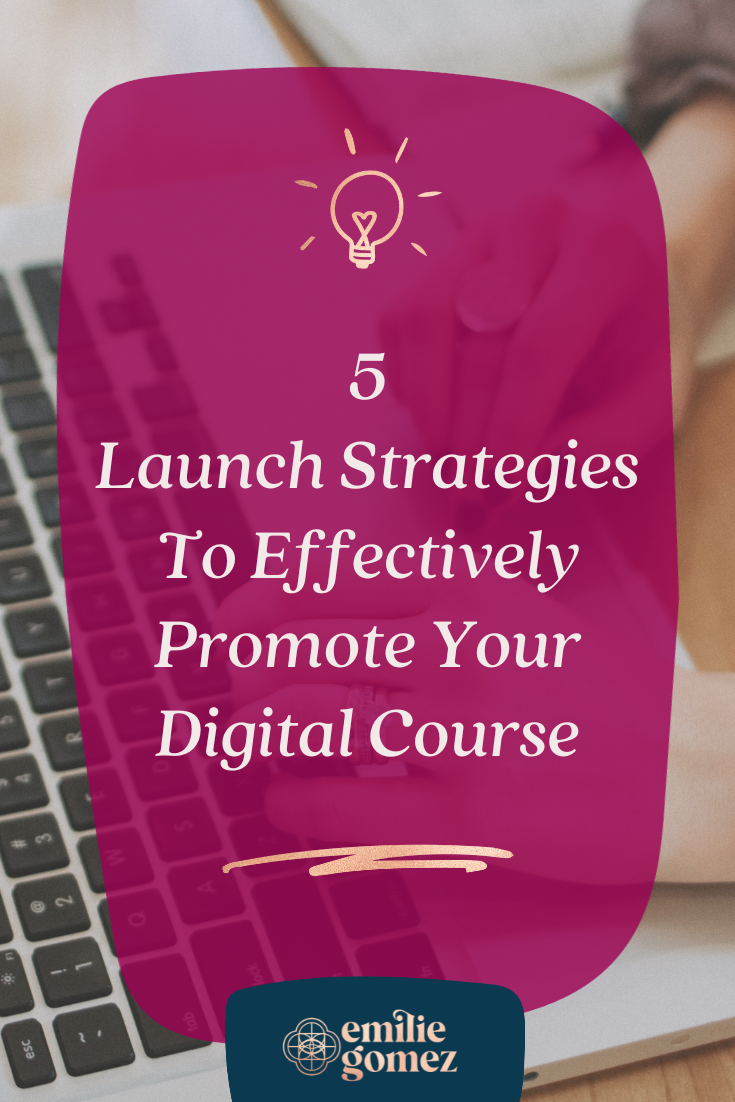If you’ve been running your online business for a while, you’ll know that launching is a popular marketing strategy. It’s a great way to announce your new offerings to the world and get people to enrol in your courses or programs.
It’s popular because it can generate great results. And yet, many of my clients hate launching – that is, before they start working with me. Maybe, like my clients, you’re not a fan of launches because:
- You replicated what you’ve seen other people in your industry do (e.g. a webinar or a challenge). Still, you didn’t get the same results.
- Your marketing coach told you you needed to launch. You got all your copy ready, only to realise that you didn’t know how to do the tech side of it.
- One of your business mentors posted on social media that “Launching is all about mindset, so stop procrastinating. You can launch in a week” (or something along those lines). What they didn’t tell you is the amount of preparation that goes into a launch (especially if it’s your first one).
Launching doesn’t have to be hard. And it can be done in a minimal amount of time IF you’ve launched that product or service before and the launch was successful (however you define success). Why? Because you’ll be able to reuse the same content – with maybe some tweaks to make it even more successful.
However, if you have a small list or haven’t tested your idea (by asking your ideal client or by working with one-on-one clients), it’s gonna take more work. You can still launch, but you may need a different strategy. You’ll want to use tactics that take your business circumstances into account, rather than replicate what others in your industry are doing.
So let me share with you 5 launch strategies to effectively promote your offerings.
Launch phases
Before I explain the different ways you can launch your offering, let’s briefly talk about the phases of a launch. These phases are where some of the differences lie between the strategies.
- Pre-prelaunch. At this stage, you’re creating awareness in the market. It’s a time of conversation to find out what your audience wants. You can do these via social media and by creating a lead magnet that will complement the offer that you’re launching.
- Prelaunch (or Open Cart). Here you’re building more interest in your offer (without selling it yet). You provide more free content (in line with the service or product you’re launching), and you explain what transformation your client can achieve. The free content that you provide is one way to start that transformation. To complete it, they’ll need to purchase your product or service. The two most common ways to prepare your audience for your offer is a webinar and a free challenge.
- Launch. This is when you open your cart for your audience to purchase your product or enrol in your program. During this time, you actively sell your offer by highlighting its benefits and sharing testimonials. You can do that on social media, but you’ll also want to create an email sales sequence.
- Post Launch. This is when you deliver your course or program. Since you’ve built momentum, it’s also a great time to start garnering interest for your next launch, using a waitlist.
Keep these stages in mind as you read the remainder of this article, as it’s where the difference between these launches rests.
Launch strategy #1: seed launch(a.k.a. soft launch)
If your offering is new or your email list is small, you’ll want to start with a seed launch.
Small is relative, of course. You’ll want to check the conversion rate for your industry. At the time of writing this post, the average conversion rate for converting a subscriber to a customer is between 2 and 5%. So, if you’re looking to enrol 5 people, you only need 100 subscribers on your list. The price of your offer, how long you’ve been in the industry and how engaged your audience all influence your conversion rate.
Before you go all in and create your course, you’ll want to make sure there is a need for it. The best way to do this is with your pre-prelaunch. Start conversations based on what you think your audience wants and adapt your offer and your copy as you go.
You’ll want to have some content pre-written but don’t be too attached to it as you may discover that it’s not what your audience wants. This is a great way to get feedback and test an offer.
Once you have one person enrolled, you can start creating your content. However, once again, you don’t want to build it all. You’ll want to ask for feedback before you release the next part of the offer. Suppose your course has 5 modules. You’ll create Module 1 and a short time after you’ll ask for feedback. You may not always ask for direct feedback. Listen to what your customers are saying and the questions they’re asking and adapt your course content accordingly. Make sure you still deliver everything you promised during your launch.
Launch strategy #2: internal launch (a.k.a. repeated launch or hard launch)
If your soft launch was successful (however YOU define success), then you’ll want to re-launch your product using the same formula.
You may want to tweak a few things and some of the copy. Since you’ve had people go through your first launch, you’ll also have testimonials that you can now include in your sales sequence and on your sales page.
Since you’re no longer waiting for feedback to create your offer, you can reuse the same content you used previously. This means that you can also automate most of your launch, if not all of it.
Automating your launch doesn’t mean it’s hand off and you do nothing – this is another type of launch that I discuss below. It means that you can spend less time writing emails and social media posts. Instead, you can be more present and engage with your audience more deeply and more frequently throughout the different stages of your launch.
The other difference with the soft launch is that your product already exists. So your effort after the launch is minimal, depending on what you offer. You also have a successful offering, so you can spend more time promoting the next launch and build your waitlist.
Launch strategy #3: exclusivity launch
If your product or service is aimed at a limited number of people, you’ll launch it using an exclusivity launch.
For example, one of my clients launched a mastermind. She’s now looking to launch a certification program. However, only clients that have completed the mastermind will be allowed to enrol in the certification program as they need the foundation before they can teach the material to others.
This launch is behind the scene since only people who qualify will receive your emails. Also, the prelaunch phase may look different from a repeated launch as people are already working with you in some capacity. So, instead of a challenge or a webinar, you may limit your prelaunch to emails only.
Unlike all the other stages, the pre-prelaunch of the exclusivity launch should be public. You’ll still want to talk about your offer every now and again on your social media platforms, so your ideal client knows that there’s another way to work with you. This will also help drive people to your other offer since it’s a required step to get access to your exclusive offer.
Launch strategy #4: affiliate launch
Once you’ve run your program a few times and you’re getting rave reviews about it, you may want to get your past clients to help you promote it. This is even more powerful than testimonials as your past clients will actively share your programs with their audience, along with their story and how it helped them.
An affiliate launch isn’t standalone. You’ll launch your product yourself as a hard launch and ask your affiliates to promote it at the same time.
However, before you do this, you’ll need to decide how much your affiliates are getting – it has to be worth it for them and for you. You’ll also want to make sure you support them during that launch with collaterals (e.g. social media images) and guidelines to help them promote your product.
Marie Forleo’s B-School and The Beautiful You Coaching Academy’s Life Coaching Course are examples of affiliate launches. (I’m NOT an affiliate.)
Launch strategy #5: evegreen
As opposed to all the other launches, an evergreen launch isn’t live, meaning it doesn’t have an open and close cart period. Basically, you can enrol at any time.
In the front end, it may look like a launch, with all the phases described above, but the prelaunch step isn’t live. You’ll usually have access to a pre-recorded webinar. There’ll usually be a special offer for a limited time after you’ve watched the webinar to create the same sense of urgency as a live launch. Some people make it sound like the offer will disappear, and the course won’t be available, but it’s often not the case.
Audiences are quite savvy these days, and if they’re business owners themselves, they know all the tricks and won’t be falling for this. Be authentic. Don’t pretend that something won’t be there if it will be. This isn’t to say don’t offer a special offer, but don’t act as if the course itself will disappear. All you’ll achieve is turning people away.
Creating an evergreen launch requires some tech set-up to make sure all your tools talk to each other. There are many tools available to help, but the cost is usually not cheap. So you’ll want to make sure you’ve tested and launched your products many times with repeated launches before you automate it and make it evergreen.
There are many ways to release your offer to the world. Hopefully, this article has given you a better understanding of the types of launches and which one is better suited for your product.
If you’re still not keen on launching, it’s OK – it’s not for everyone.
However, if you’d like to give launching a(nother) go, the best way to prepare for your next launch is right after you finish one as your experience will be fresh. So, you’ll know what to improve or fine-tune to make your next launch easier.
The time between launches is also the best time to work on setting up the tools and building the systems that will support you and your team in creating an effortless launch. Reach out if you’d like me to help you during this in-between time.













